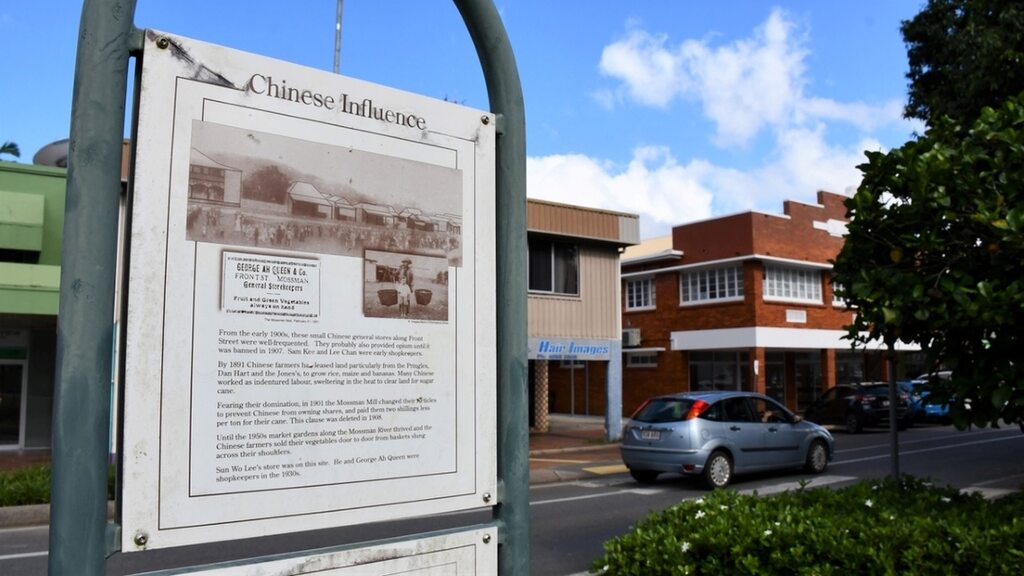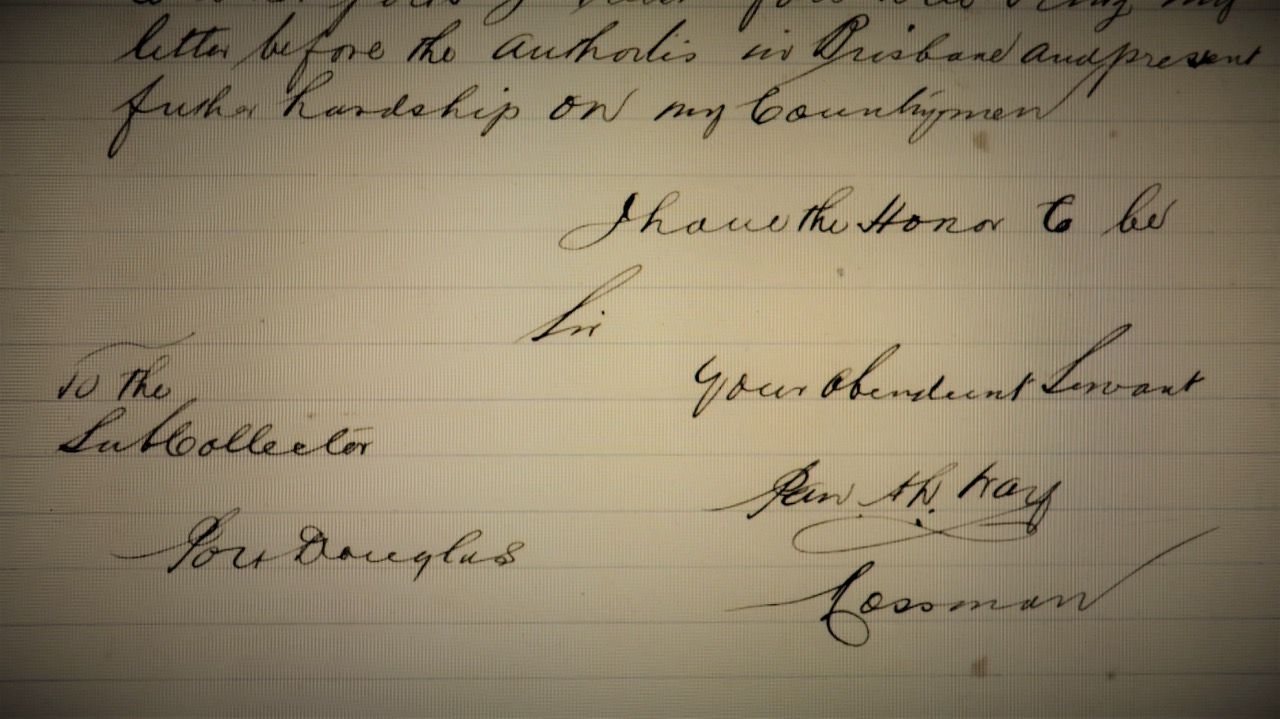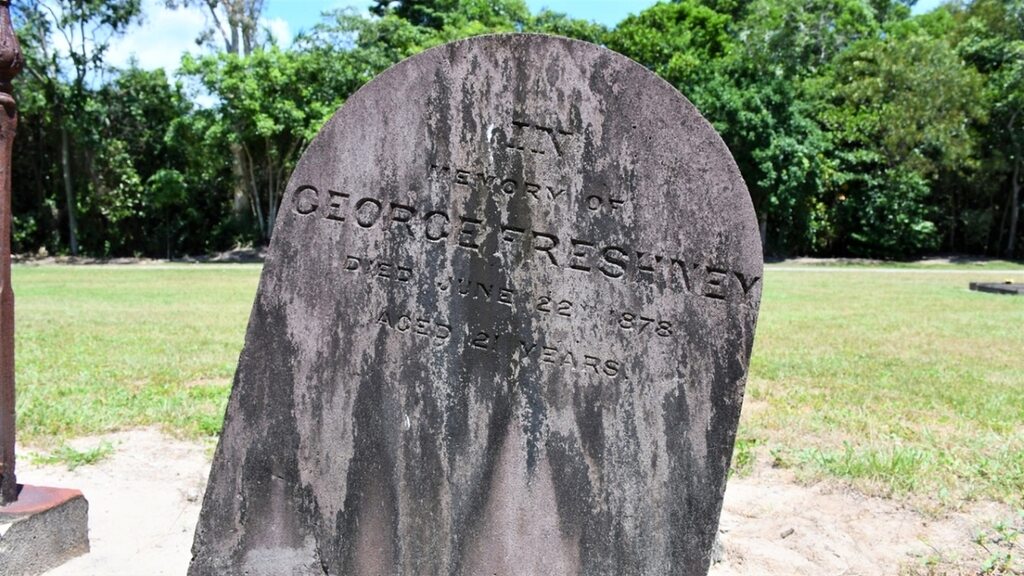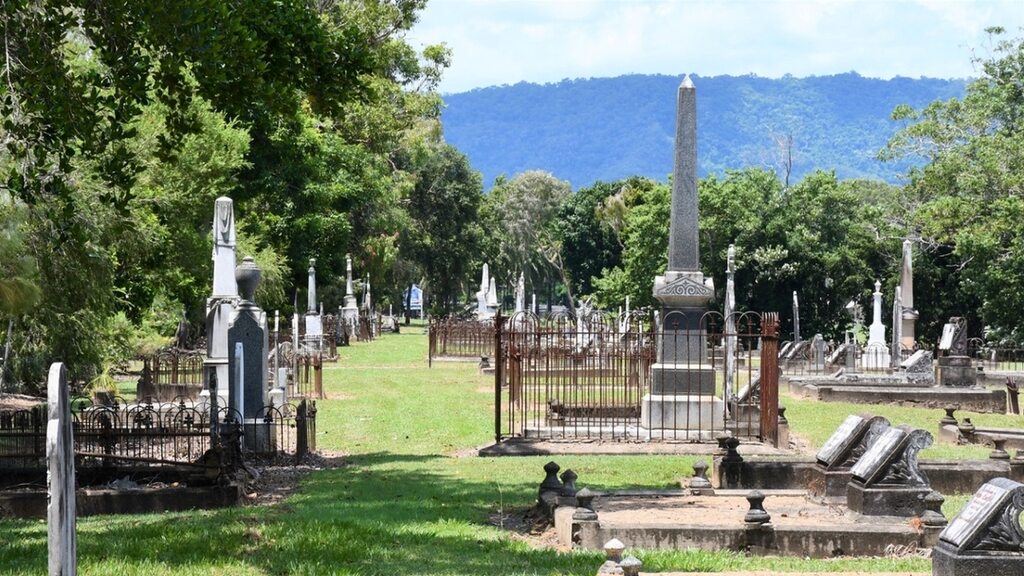
Pang Ah Way and a grave mistake discovered
Cemetery Mystery Solved
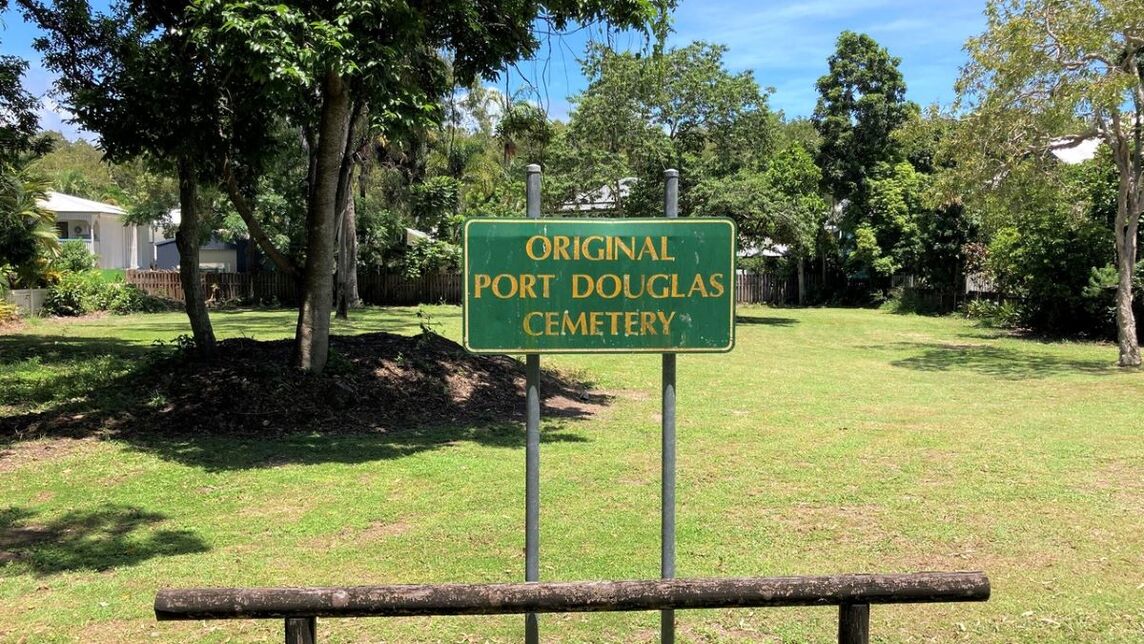
Sometimes you must call out a mistake.
And this Newsport article will do just that because it’s important Port Douglas history not be re written. We’ll get to that in a moment and why the Council needs to remove a sign from a park close to town.
But let’s start with the news that started us out on this mission of discovery.
A new Cairns Museum exhibition explores a little-known history from far north Queensland. The award-winning ‘Rediscovering Buk Ti’ looks at the hidden lives of the Chinese in the far north, and through it we’ve discovered that Port Douglas had its real-life Chinese hero in the late 1800’s.
His name was Pang Ah Way from Mossman, who ran several businesses in Port Douglas including a butcher shop and general store. He was also naturalised and a wealthy landowner. Pang was a go getter and a man of the people despite many challenges.
Unfortunately, there’s no pictures of this remarkable man, but Newsport can sure paint a picture of the character of Pang Ah Way.
In the late 1800’s up to the turn of the century there was a lot of anti-Chinese sentiment despite the fact they occupied a huge part of the local population. The 1886 census notes that Chinese made up 40% of the total population of Port Douglas. Chinese were almost two-thirds of the district's entire population, but white folks weren’t all that tolerant.
In 1901 the Mossman Mill even prevented any Chinese from owning shares in the mill and paid them two shillings less per ton for their cane. Thankfully they scrubbed that racist rule seven years later in 1908. That disturbing information can be found on a small plaque in the triangle at Mossman that’s meant to be a reminder of the Chinese contribution to the district. Most people in the Shire or visitors to the region wouldn’t even know it’s there.
While many Chinese men had jobs on the goldfields and owned and worked in cane plantations, became market gardeners, cooks, tailors, even watchmakers, it was hard to rise to any sort of prominence.
Ah, but Pang Ah Way did. He came to Cairns from China with his two brothers, married Jane Goodwillie, an immigrant from England on the 20th of August 1890 in Cairns and the couple settled in Port Douglas.
He worked hard and parlayed his money into two thriving businesses and land. Chinese merchants like Pang Ah Way had a reputation for business integrity and generosity. Banks were known to lend large sums of money to them without security, as repayment of the loan was certain. Their names often appeared prominently in lists of donations to charity. While Pang was a clever businessman, he also had a social conscience.
One of the first acts of the new Parliament following Federation in 1901 was to pass legislation that restricted non-white, non-British immigration. The Immigration Restriction Act 1901 became the cornerstone of a policy aimed at keeping Australia white, what we now refer to as the White Australia policy
Pang was a highly educated man who could speak and write english fluently, a community leader and philanthropist and much loved within the Shire, despite the fact the wider Chinese community at the time had a tough time with racism. But he was not one to hide his light under a bushel.
As part of the Cairns Museum exhibition, they have a letter on show written by Pang Ah Way to the local Port Douglas Customs Officer stating that laws introduced by Government were racist and unfair. Pang pointed out deficiencies in the regulations that were causing hardship to his fellow countrymen and women trying to travel to and from China.
He signed his name as Pan not Pang. Nothing sinister, he often referred to his own surname in Australia as Pan, but he was also recorded as Pang in other official documents.
We don’t know when Pang died, and his final resting place is a mystery. This reporter did a walkthrough of the Port Douglas Cemetery in search of his or his British wife’s grave, but with no success. He may have been taken back to China as many wanted their remains to be sent there for spiritual and traditional reasons.
Original cemetery theory de-bunked
And now we come to a controversial conversation about what is and isn’t the original cemetery in Port Douglas.
A vacant block of land off the main road close to the Port Douglas township is rumoured to have been the Chinese Cemetery in the days of Pang, but Newsport can’t find anyone, historian or otherwise, who believes that.
Sadly, still born babies from the Port Douglas Hospital, that once stood across the road, may have been buried there, but our first original Port cemetery? Well just hear us out.
The Douglas Shire Council currently have a sign on the block declaring it’s the ‘Original Port Douglas Cemetery’.
A Council spokesperson told Newsport that “Council has a survey plan from September 1947 when the subject land was identified as being a ‘Cemetery Reserve’ and a survey plan from 1985 when the subject land was identified as being a ‘Reserve for Memorial Purposes’. The spokesperson went on to say, “When Douglas was part of Cairns Regional Council in 2009, an email from the State Lands Department advised that the purpose of the land had been changed from ‘Memorial’ to ‘Park’.
But none of that proves it’s the original Port Douglas cemetery, because in fact it’s not.
Noel Weare, the former President of The Douglas Shire Historical Society provided us with valuable information that proves the Council sign is incorrect.
Dates don’t lie
The present-day cemetery on the main road into Port, opposite the Sheraton Grand and near where the helicopters take off is the true original cemetery.
Records show that the first burial at the cemetery was on 22nd June 1878, of George Freshney who died aged 21 years and according to Noel Weare, the cemetery was gazetted the same year.
The passionate history researcher says the official Port Douglas Hospital, opposite the park where the Council sign is located, was successfully tendered for on 28th December 1880 by TP Hardy and Co and the building went up the following year in 1881.
The park itself was gazetted as a cemetery in 1883, some five years after our current cemetery, so that blows the ‘original’ theory out of the water and for history’s sake the sign really should be removed.
Meanwhile, Chinese heritage specialist Dr Sandi Robb says Cairns Museums Rediscovering Buk Ti brings to light the history and heritage of local Chinese families. Dr Robb has told Newsport “The exhibition also showcases the role of Chinese men in the development of the sugar industry and the movement of these men and their families back and forth to China”. It also explores the business and family links of Cairns Chinatown, being the largest Chinese hub outside of Brisbane.
Pang Ah Way would certainly have approved.
‘Rediscovering Buk Ti’ is currently open through to the April 30th 2022 at Cairns Museum. Admission is free with Museum entry.
Thank you!
Newsport thanks its advertising partners for their support in the delivery of daily community news to the Douglas Shire. Public interest journalism is a fundamental part of every community.
Got a news tip? Let us know! Send your news tips or submit a letter to the editor here.
* Comments are the opinions of readers and do not represent the views of Newsport, its staff or affiliates. Reader comments on Newsport are moderated before publication to promote valuable, civil, and healthy community debate. Visit our comment guidelines if your comment has not been approved for publication.

